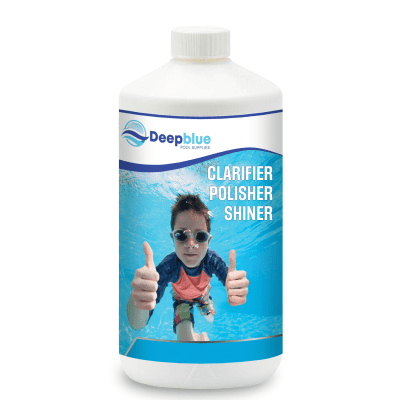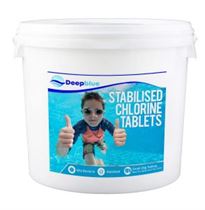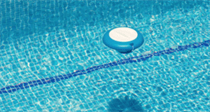Bromine is another popular sanitizer used in hot tubs, often favored for its effectiveness and stability. This blog post will explore the benefits of bromine, how to use it, and tips for maintaining safe and clean water in your hot tub.
1. Why Use Bromine?
Bromine is an effective sanitizer that kills bacteria and other harmful pathogens, similar to chlorine. It is particularly advantageous for hot tubs due to its stability in higher temperatures.
2. Forms of Bromine
There are two main forms of bromine available for hot tubs:
- Bromine Tablets: These slow-dissolving tablets are convenient for maintaining consistent sanitizer levels in your hot tub.
- Bromine Granules: These dissolve quickly and are often used for shocking the water.
3. Ideal Bromine Levels for Hot Tubs
The recommended bromine level for hot tubs is between 3-5 ppm (parts per million). Maintaining this level is crucial for ensuring a safe and enjoyable soaking experience.
4. Testing Bromine Levels
Regularly testing bromine levels is essential for maintaining balanced water. Here’s how to test your hot tub water effectively:
- Use a Test Kit: Invest in a reliable test kit or strips designed for hot tubs that can measure bromine levels.
- Frequency: Test the water at least once a week, or more frequently if the hot tub is used often or after heavy usage.
5. Adding Bromine to Your Hot Tub
To maintain proper bromine levels, follow these steps:
- Bromine Tablets: Place the appropriate number of bromine tablets in a floating dispenser or the skimmer basket according to the manufacturer’s instructions.
- Bromine Granules: Dissolve the recommended amount of bromine granules in a bucket of warm water before adding it to the hot tub.
6. Shocking Your Hot Tub with Bromine
Shocking your hot tub is an important part of maintaining water quality. It involves adding a high dose of bromine to eliminate contaminants:
- Frequency: Shock your hot tub every 1-2 weeks or after heavy usage.
- Types of Shock: Use bromine granules or a non-bromine shock treatment. Follow the instructions on the product for dosage and waiting time before using the hot tub.
7. Benefits of Bromine over Chlorine
While both bromine and chlorine are effective sanitizers, bromine offers several advantages:
- Stability: Bromine remains effective at higher temperatures and pH levels compared to chlorine, making it ideal for hot tubs.
- Less Odor: Bromine typically produces less odor than chlorine, providing a more pleasant soaking experience.
8. Signs of Low Bromine Levels
Recognizing the signs of low bromine levels can help you take action before problems escalate:
- Cloudy Water: If the water appears cloudy or has an unpleasant odor, it may indicate low bromine levels.
- Algae Growth: If you notice green or brown water, it’s time to shock the water and raise the bromine levels.
9. Storing Bromine Safely
Proper storage of bromine is crucial for safety:
- Cool, Dry Place: Store bromine in a cool, dry area away from direct sunlight and moisture.
- Keep Away from Children: Ensure that bromine products are out of reach of children and pets.
10. Conclusion
Using bromine effectively is essential for maintaining clean and safe hot tub water. Regular testing, proper dosing, and maintenance practices will help ensure a pleasant soaking experience for you and your guests. By understanding the benefits of bromine in hot tub chemistry, you can enjoy a worry-free hot tub experience. If you need any of the chemicals or tools mentioned please check our website or contact The Pool Cleaners’ friendly support team for advice
Some products you might be interested in:
Rated 4.47 out of 5
£18.73 £13.11
Rated 4.51 out of 5
£34.34 £24.04
Rated 4.50 out of 5
£14.79 £10.35
Rated 4.51 out of 5
£35.68 £28.54
Related Products
Related Articles
 Mini 20g STABILISED Chlorine Tablets 1kg SLOW RELEASE Quality product
1 ×
Mini 20g STABILISED Chlorine Tablets 1kg SLOW RELEASE Quality product
1 × Plastica NetSkim Display Box of 36 Boxes
2 ×
Plastica NetSkim Display Box of 36 Boxes
2 × Lovibond 250 x DPD No 1 Comparator Tabs
1 ×
Lovibond 250 x DPD No 1 Comparator Tabs
1 × Certikin Cg700 Stainless Steel Adaptor Kit For Concrete Tile, Liner Pools (FLAD02GRLSS)
1 ×
Certikin Cg700 Stainless Steel Adaptor Kit For Concrete Tile, Liner Pools (FLAD02GRLSS)
1 × Certikin S/S Lid Screw M6 X 12Mm - Pack Of 10 (SPC406/10)
1 ×
Certikin S/S Lid Screw M6 X 12Mm - Pack Of 10 (SPC406/10)
1 × AquaSPArkle - Spa pH Plus 1 X 1kg Increaser + PH+
1 ×
AquaSPArkle - Spa pH Plus 1 X 1kg Increaser + PH+
1 × Fastlane endless swimming pool swim jet -Swim without turning -In Wall - For New Builds Or Renovations - Silver Acrylic (EPFLW/SL/NT)
1 ×
Fastlane endless swimming pool swim jet -Swim without turning -In Wall - For New Builds Or Renovations - Silver Acrylic (EPFLW/SL/NT)
1 × Certikin X-Jet Installation Kit For Concrete Or Liner Pools (FL98450)
1 ×
Certikin X-Jet Installation Kit For Concrete Or Liner Pools (FL98450)
1 × Certikin Fastlane Floor Mirror (EPFL7)
1 ×
Certikin Fastlane Floor Mirror (EPFL7)
1 × Certikin 1.5” Mpv Rotor (SPTH10)
1 ×
Certikin 1.5” Mpv Rotor (SPTH10)
1 × Multifunctional 200g Chlorine Tablets 5 kg Long lasting stabilised clarifier algae inhibitor Quality product
1 ×
Multifunctional 200g Chlorine Tablets 5 kg Long lasting stabilised clarifier algae inhibitor Quality product
1 × Certikin Probe Holder - Offline For 2 Probes - Ph & Redox - 6 X 8Mm Connections (CDENPED4)
1 ×
Certikin Probe Holder - Offline For 2 Probes - Ph & Redox - 6 X 8Mm Connections (CDENPED4)
1 ×
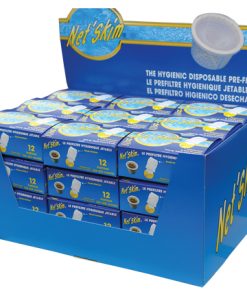 Plastica NetSkim Display Box of 36 Boxes
Plastica NetSkim Display Box of 36 Boxes  Lovibond 250 x DPD No 1 Comparator Tabs
Lovibond 250 x DPD No 1 Comparator Tabs  Certikin Cg700 Stainless Steel Adaptor Kit For Concrete Tile, Liner Pools (FLAD02GRLSS)
Certikin Cg700 Stainless Steel Adaptor Kit For Concrete Tile, Liner Pools (FLAD02GRLSS)  Certikin S/S Lid Screw M6 X 12Mm - Pack Of 10 (SPC406/10)
Certikin S/S Lid Screw M6 X 12Mm - Pack Of 10 (SPC406/10)  AquaSPArkle - Spa pH Plus 1 X 1kg Increaser + PH+
AquaSPArkle - Spa pH Plus 1 X 1kg Increaser + PH+ 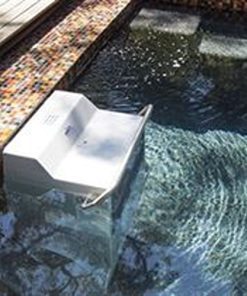 Fastlane endless swimming pool swim jet -Swim without turning -In Wall - For New Builds Or Renovations - Silver Acrylic (EPFLW/SL/NT)
Fastlane endless swimming pool swim jet -Swim without turning -In Wall - For New Builds Or Renovations - Silver Acrylic (EPFLW/SL/NT) 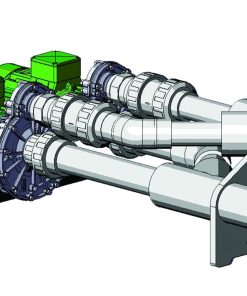 Certikin X-Jet Installation Kit For Concrete Or Liner Pools (FL98450)
Certikin X-Jet Installation Kit For Concrete Or Liner Pools (FL98450)  Certikin Fastlane Floor Mirror (EPFL7)
Certikin Fastlane Floor Mirror (EPFL7) 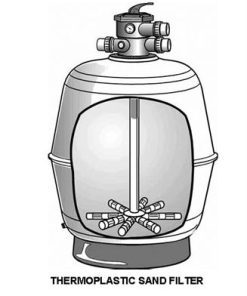 Certikin 1.5” Mpv Rotor (SPTH10)
Certikin 1.5” Mpv Rotor (SPTH10) 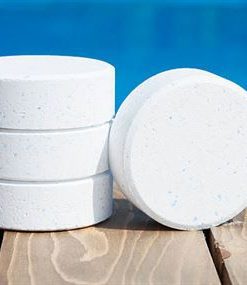 Multifunctional 200g Chlorine Tablets 5 kg Long lasting stabilised clarifier algae inhibitor Quality product
Multifunctional 200g Chlorine Tablets 5 kg Long lasting stabilised clarifier algae inhibitor Quality product  Certikin Probe Holder - Offline For 2 Probes - Ph & Redox - 6 X 8Mm Connections (CDENPED4)
Certikin Probe Holder - Offline For 2 Probes - Ph & Redox - 6 X 8Mm Connections (CDENPED4) 
